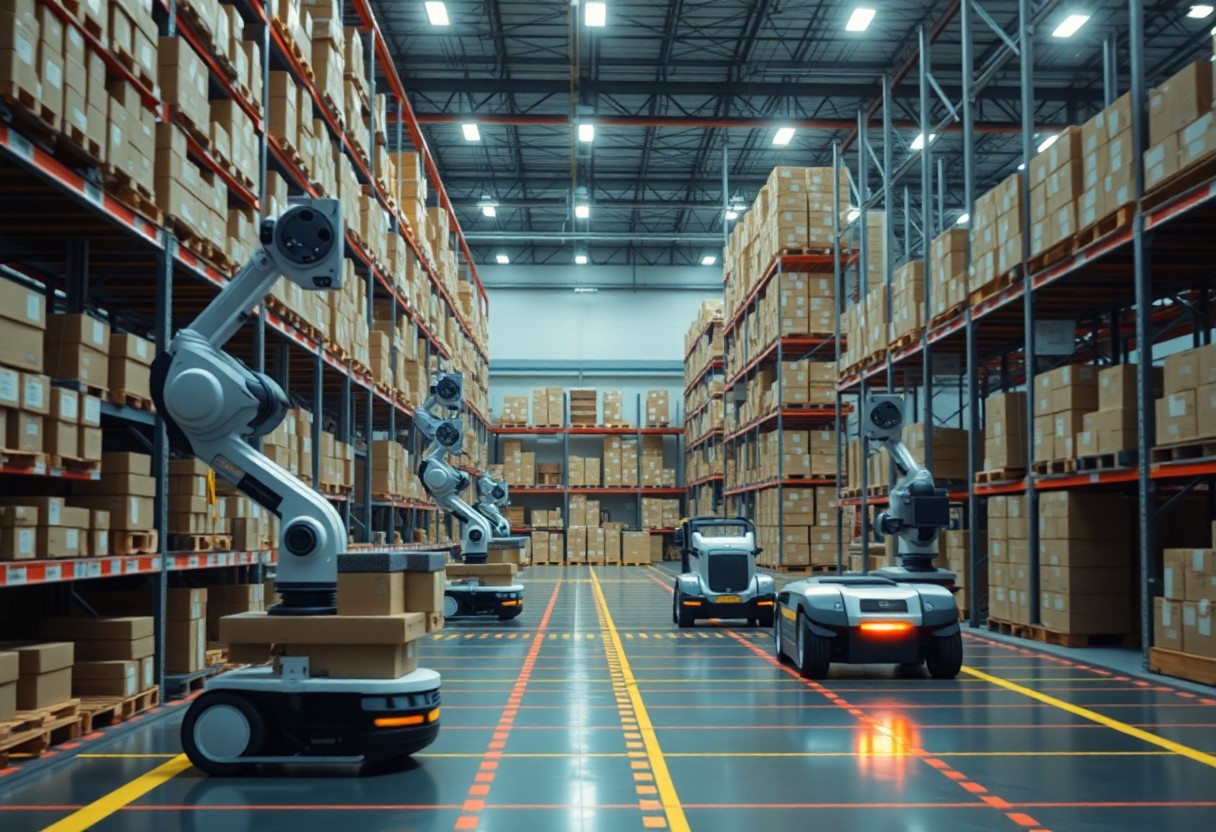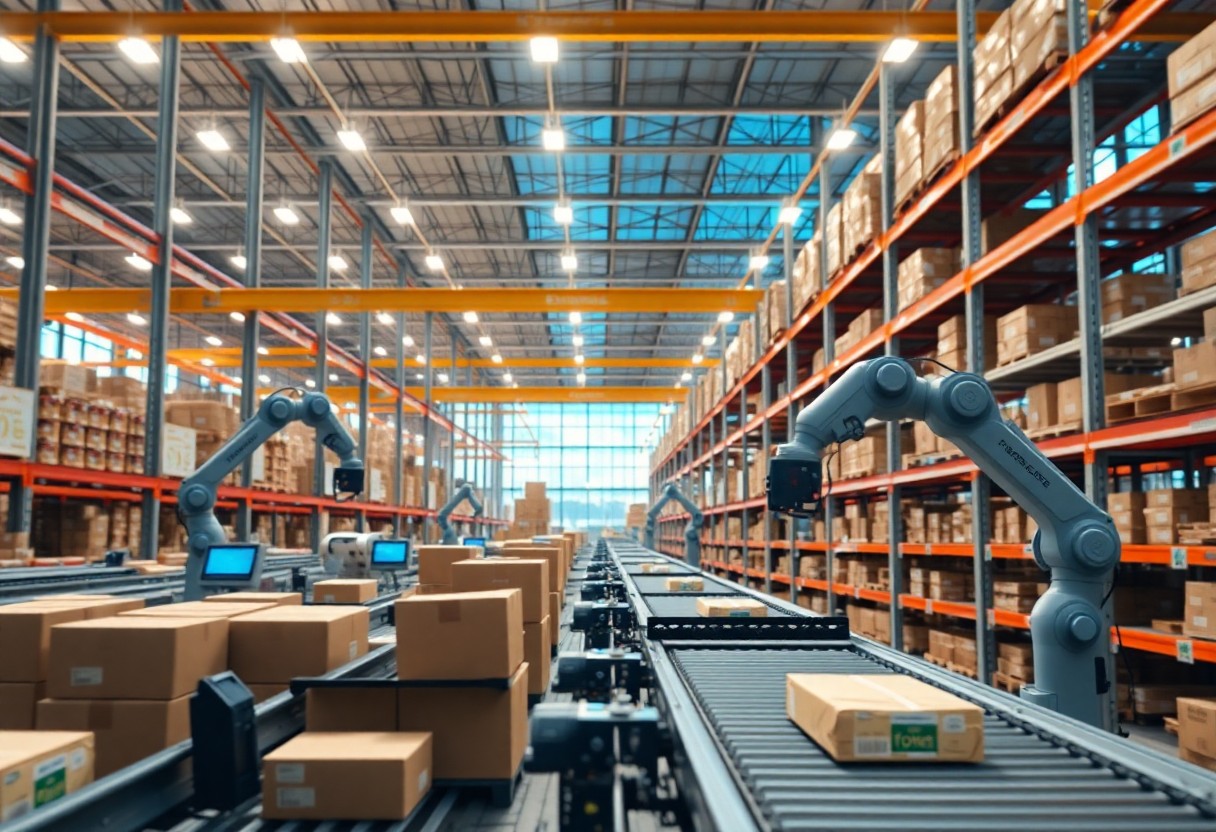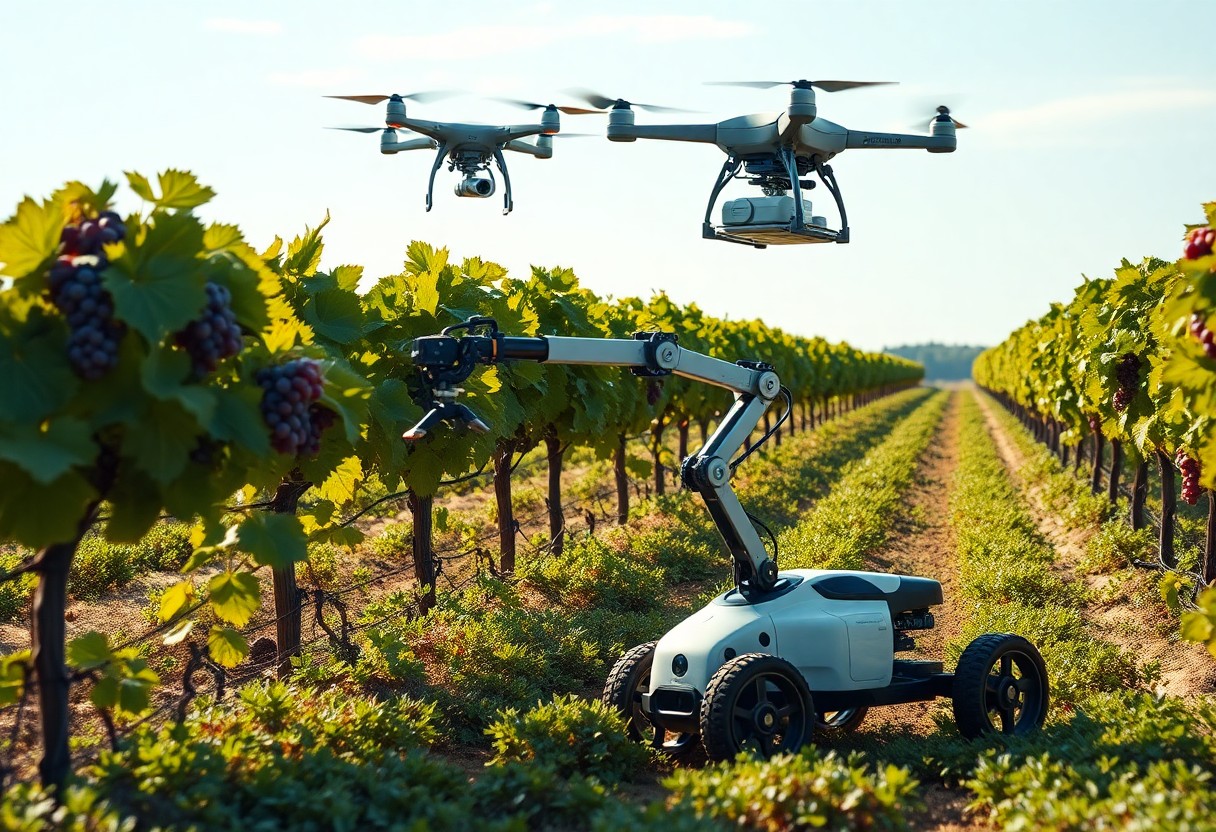Logistics has transformed significantly with the integration of robotics in warehouse automation and logistics. You can leverage these advanced technologies to streamline operations, reduce costs, and enhance overall efficiency. From automated picking systems to autonomous mobile robots, understanding how these innovations impact your supply chain will empower you to make informed decisions and stay competitive. This post will explore various robotic applications that are reshaping the logistics landscape, providing valuable insights for your business strategy.

Overview of Warehouse Automation
Warehouse automation encompasses the use of technology to streamline operations, enhance efficiency, and reduce labor costs in logistics. You’re seeing it transform traditional warehouses into smart hubs where robotics and AI facilitate inventory management, order fulfillment, and shipping processes. This evolution not only increases throughput but also improves accuracy, enabling your business to respond rapidly to changing demands in the marketplace.
Definition and Importance
Warehouse automation refers to the integration of advanced technologies in warehousing processes to improve operational efficiency. By automating repetitive tasks, you can minimize errors, reduce labor costs, and boost productivity. In a competitive landscape, insufficient automation can lead to slower deliveries and increased operational costs, affecting your bottom line.
Historical Development
The journey of warehouse automation began in the early 20th century with the introduction of conveyor belts and pallets. You might find it fascinating that the first automated storage and retrieval systems emerged in the 1960s, setting the stage for modern robotics. Over the decades, advancements in computing and networking laid the groundwork for sophisticated systems, culminating in the autonomous mobile robots (AMRs) and robotic process automation (RPA) we see today.
Initially, warehouse automation was limited to mechanical systems, such as conveyors and sorters, which enhanced manual processes. The 1980s introduced computer-controlled systems, allowing for better inventory management and tracking. The 1990s saw the emergence of barcode scanning, leading to significant improvements in order accuracy. As e-commerce flourished in the 2000s, the demand for automation surged, giving rise to more advanced robotics and AI-driven solutions. Today, technologies such as machine learning, IoT, and advanced predictive analytics are central in crafting efficient, responsive warehouse networks that cater to the complexities of modern logistics.
Key Robotics Technologies in Warehousing
Understanding the core technologies that drive warehouse automation enhances operational efficiency and improves logistics management. These key robotics technologies streamline various processes, from inventory management to order fulfillment, ensuring faster and more reliable warehouse operations.
Autonomous Mobile Robots (AMRs)
AMRs navigate dynamically through warehouse environments, utilizing advanced sensors and artificial intelligence to optimize their routes. Equipped with sophisticated mapping capabilities, you can deploy these robots for tasks like picking and transporting goods without predefined paths, adapting to changes in real-time to increase efficiency.
Automated Guided Vehicles (AGVs)
AGVs follow specific paths within warehouses, relying on fixed guidelines such as magnetic strips or embedded tracks. Designed for repetitive tasks, they enhance material handling processes, minimizing manual labor and ensuring consistency in operations. This reliability allows you to allocate resources more effectively.
AGVs are particularly effective in high-volume environments where precision and speed are vital. You’ll find them transporting pallets, cases, and materials between designated areas, often linked to warehouse management systems that control their operations. For example, Amazon employs AGVs to optimize inventory transport, resulting in significant time savings. With load capacities ranging from a few hundred pounds to several tons, AGVs can be tailored to fit the specific requirements of your warehouse layout and logistics operations.
Applications of Robotics in Warehouse Logistics
Robotics plays a transformative role in warehouse logistics, streamlining processes like order picking, inventory management, and shipping. By integrating automated systems, you can significantly reduce labor costs and enhance accuracy, minimizing the risk of human error. Companies employing robotics are seeing operational improvements and faster turnaround times, allowing them to meet rising customer expectations.
Order Picking Solutions
Your order picking process can benefit immensely from robotics, as automated picking systems can swiftly locate and retrieve items. These solutions include autonomous mobile robots (AMRs) that navigate the warehouse floor, as well as robotic arms that pick products from shelves. By utilizing such technologies, you can enhance picking speed and accuracy, ultimately leading to quicker order fulfillment.
Inventory Management
Robotic systems enhance inventory management by providing real-time tracking and monitoring capabilities. Automated inventory robots conduct regular audits, reducing discrepancies and ensuring that your stock levels are accurate. Employing these technologies allows for smarter analytics and better forecasting, leading to more efficient supply chain management.
With advanced robotic technologies, inventory management evolves into a streamlined process that enhances the accuracy of stock counts. For instance, some warehouses now implement autonomous robots equipped with RFID scanning capabilities, allowing for complete inventory checks without manual intervention. This not only saves time but also increases the reliability of inventory data, paving the way for optimal stock levels and reduced carrying costs. Systems that integrate robotics with inventory management software can provide insights into trends and anomalies, further improving operational efficiency and responsiveness to market changes.
Benefits of Implementing Robotics
Integrating robotics into your warehouse operations can dramatically transform efficiency and productivity. Automation allows for faster processing of goods, reduces human error, and facilitates 24/7 operations. As a result, you can meet increasing customer demands while optimizing your workflow. The data-driven insights from robotics can also help you fine-tune operations, ensuring a seamless supply chain.
Efficiency and Productivity Gains
Robotics enhances your warehouse productivity by streamlining tasks such as picking, packing, and sorting. Automated systems can operate continuously, reducing turnaround times and increasing throughput. For example, implementing autonomous mobile robots (AMRs) can accelerate inventory movement, allowing your staff to focus on higher-value tasks that require human intervention.
Cost Reduction Strategies
Utilizing robotics in your operations leads to significant cost savings by minimizing labor costs, reducing errors, and optimizing resource allocation. By replacing manual labor with robots, you can lower wage expenses and decrease overhead associated with staffing. Additionally, improved accuracy in picking and inventory management reduces waste and costly errors, generating even more savings.
Cost reduction through robotics extends beyond labor savings. Implementing automated systems can decrease operational downtime and maintenance costs while increasing overall inventory accuracy. For instance, deploying a robotic sorting system can lead to reduced product returns due to picking errors, further driving down costs. Moreover, with the ability to analyze performance data, you can continuously fine-tune your operations, leading to ongoing savings over time. Overall, the strategic application of robotics in logistics not only cuts immediate costs but also enhances the long-term profitability of your warehousing efforts.
Challenges and Considerations
Implementing robotics in warehousing presents challenges that require careful consideration. Issues such as high initial investment costs, ongoing maintenance expenses, and the necessity for appropriate facility redesign can complicate deployment. Additionally, integrating advanced technologies with legacy systems often poses significant hurdles, demanding extensive planning and resources to ensure smooth functionality.
Integration with Existing Systems
Legacy systems can limit the effectiveness of new robotic solutions, often requiring complex adjustments or complete overhauls. To achieve seamless integration, you must consider compatibility with warehouse management systems and data infrastructure, while also developing a strategy for gradual deployment to minimize disruptions to your operations.
Workforce Implications
The introduction of robotics in warehouses directly impacts workforce dynamics, bringing both opportunities and challenges. As automation increases, roles may evolve, requiring your workforce to upskill and adapt to new tasks involving technology management and collaboration with robots.
As you transition to a more automated environment, investing in training for your workforce becomes necessary. Emphasizing technology competencies ensures that employees can operate and maintain robotic systems effectively. Studies indicate that companies which prioritize reskilling report up to 30% higher employee engagement and productivity. Balancing automation with a skilled workforce not only mitigates job displacement fears but also enhances overall operational capability, driving innovation within your logistics processes.
Case Studies of Successful Implementation
Numerous companies have successfully integrated robotics into their warehouse operations, resulting in significant efficiency and productivity gains. For insights, refer to Getting warehouse automation right.
- Amazon: Automated 88 fulfillment centers, improving order processing speed by 200%.
- Walmart: Reduced labor costs by 20% through automated inventory management systems.
- DHL: Increased order accuracy to 99.9% with robotics for sorting and packing.
- Alibaba: Implemented automated delivery vehicles in 14 cities, resulting in 30% faster delivery times.
Major Industry Players
Industry giants like Amazon and Walmart dominate the warehouse automation space, leveraging advanced robotics to handle vast inventories efficiently. Their investments in technology are driving the sector forward, showcasing impressive scaling of operations.
Emerging Companies
New entrants in the warehouse automation market are innovating with unique solutions. Startups are focusing on specific challenges, offering niche technologies that enhance operational efficiency.
These emerging companies often incorporate cutting-edge technologies like AI and machine learning to optimize logistics processes. For instance, startups such as GreyOrange and Fetch Robotics provide targeted automation solutions that cater to diverse industry needs, setting new benchmarks for efficiency and flexibility in warehouse operations.
To wrap up
Drawing together the advancements in robotics for warehouse automation and logistics, you can see how these technologies enhance efficiency, accuracy, and scalability in your operations. By integrating robotics into your supply chain, you streamline processes, reduce human error, and optimize resource management. As you adopt these innovations, you position your business to respond swiftly to market demands, ensuring competitiveness and growth in an ever-evolving landscape. Embracing robotics not only elevates your operational capabilities but also sets the stage for future advancements in your logistics strategy.







